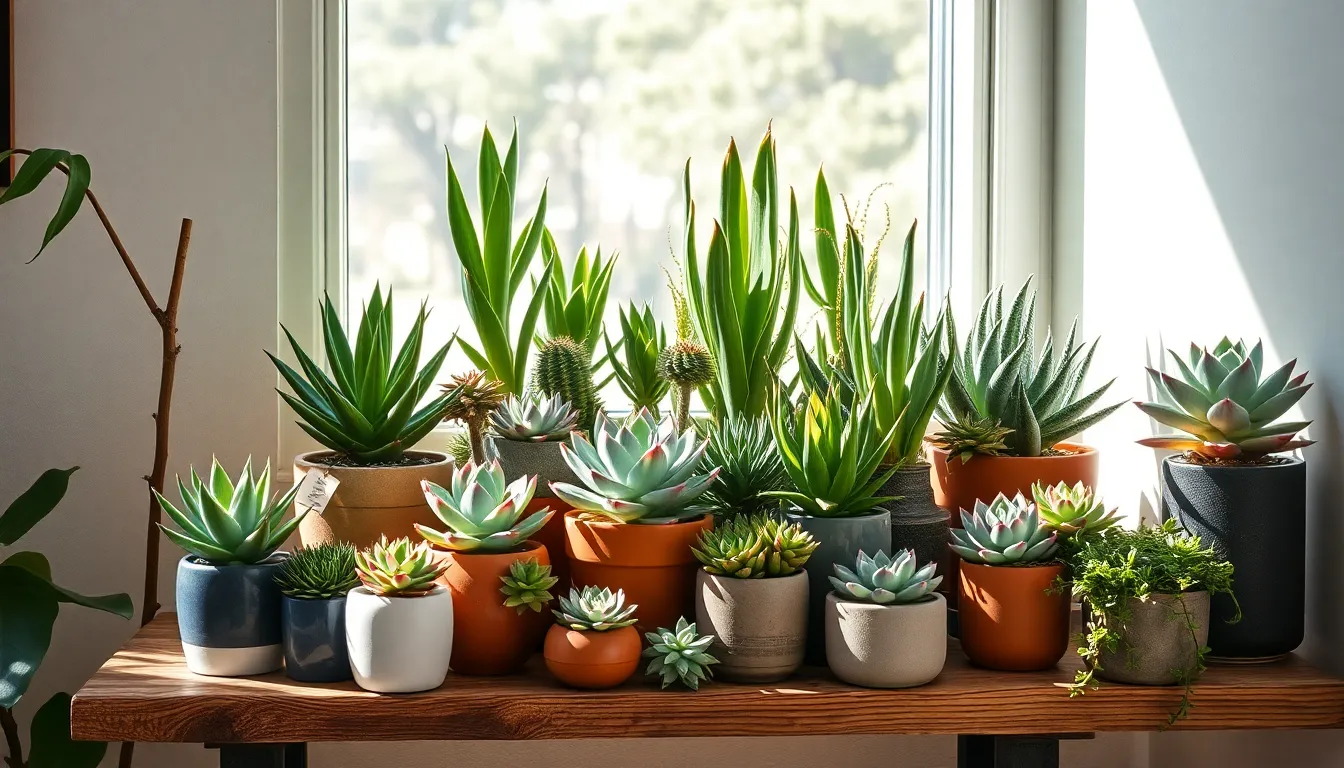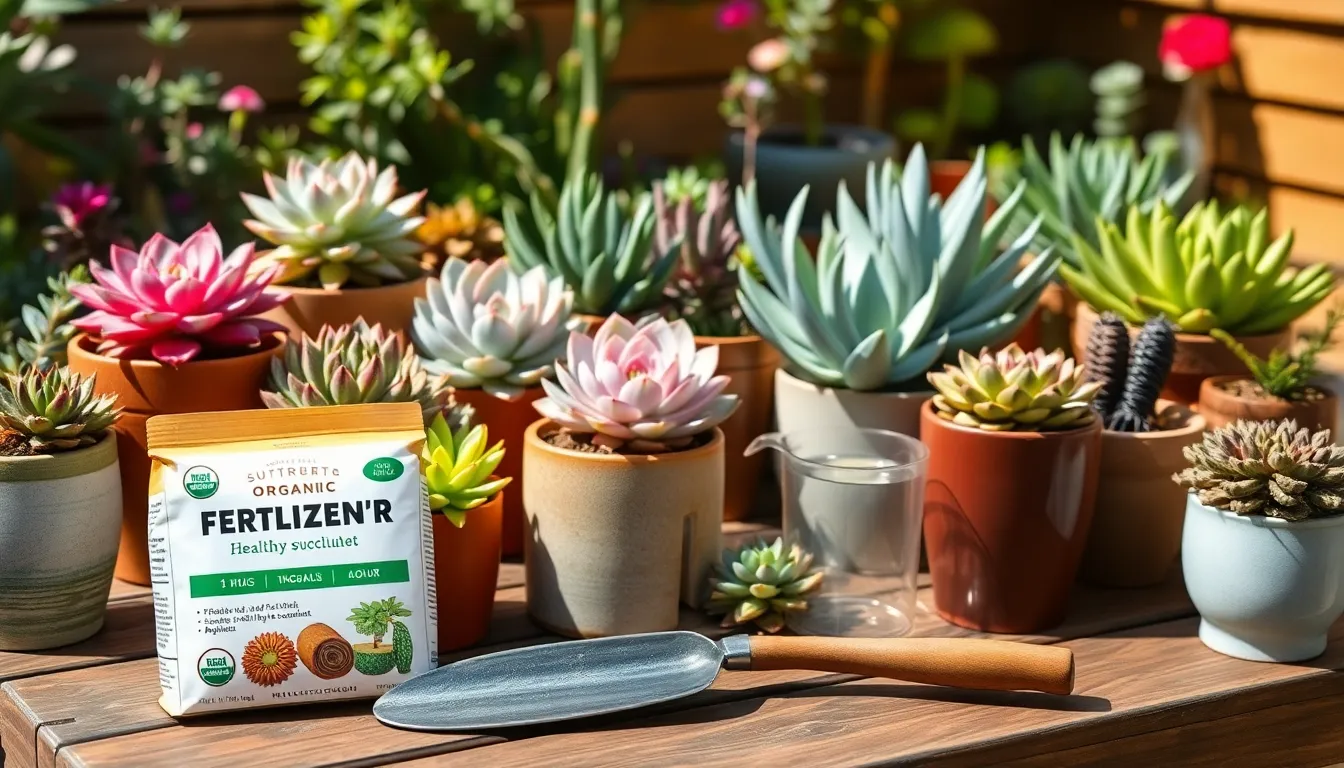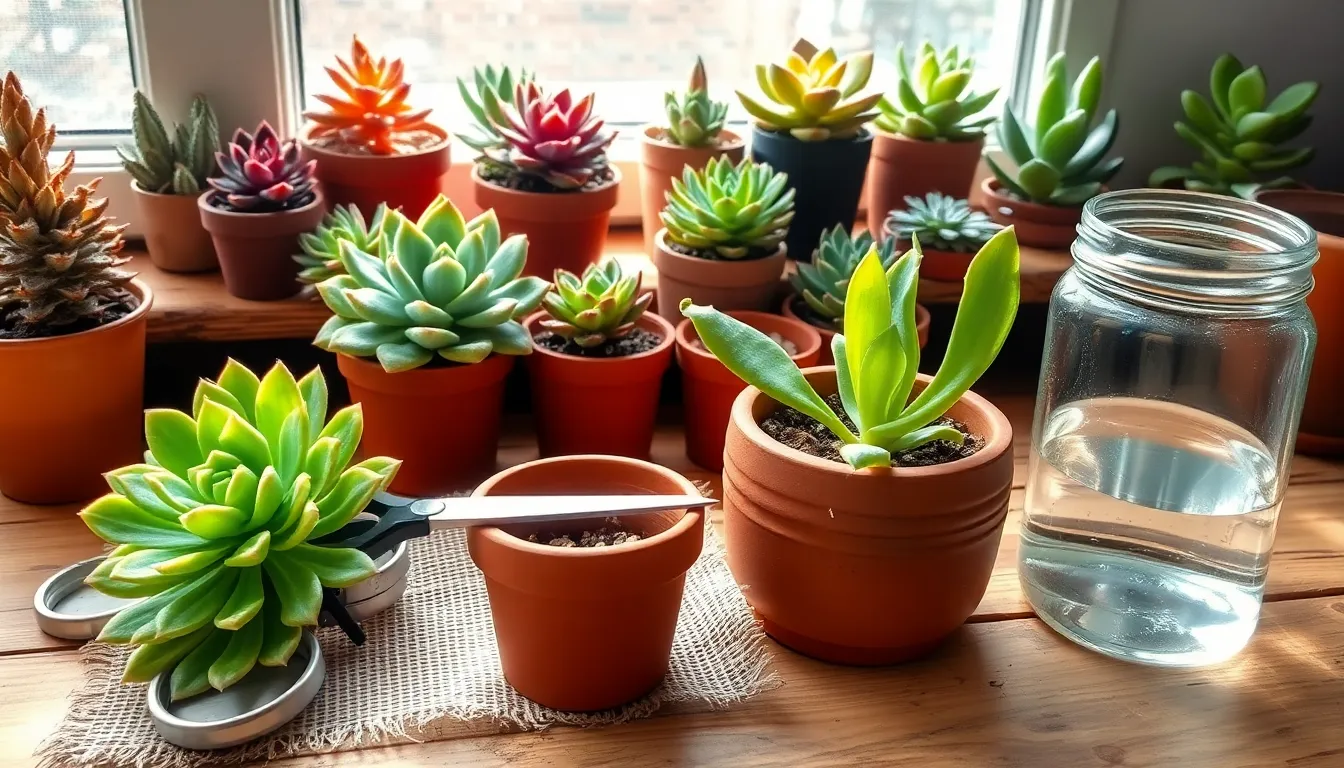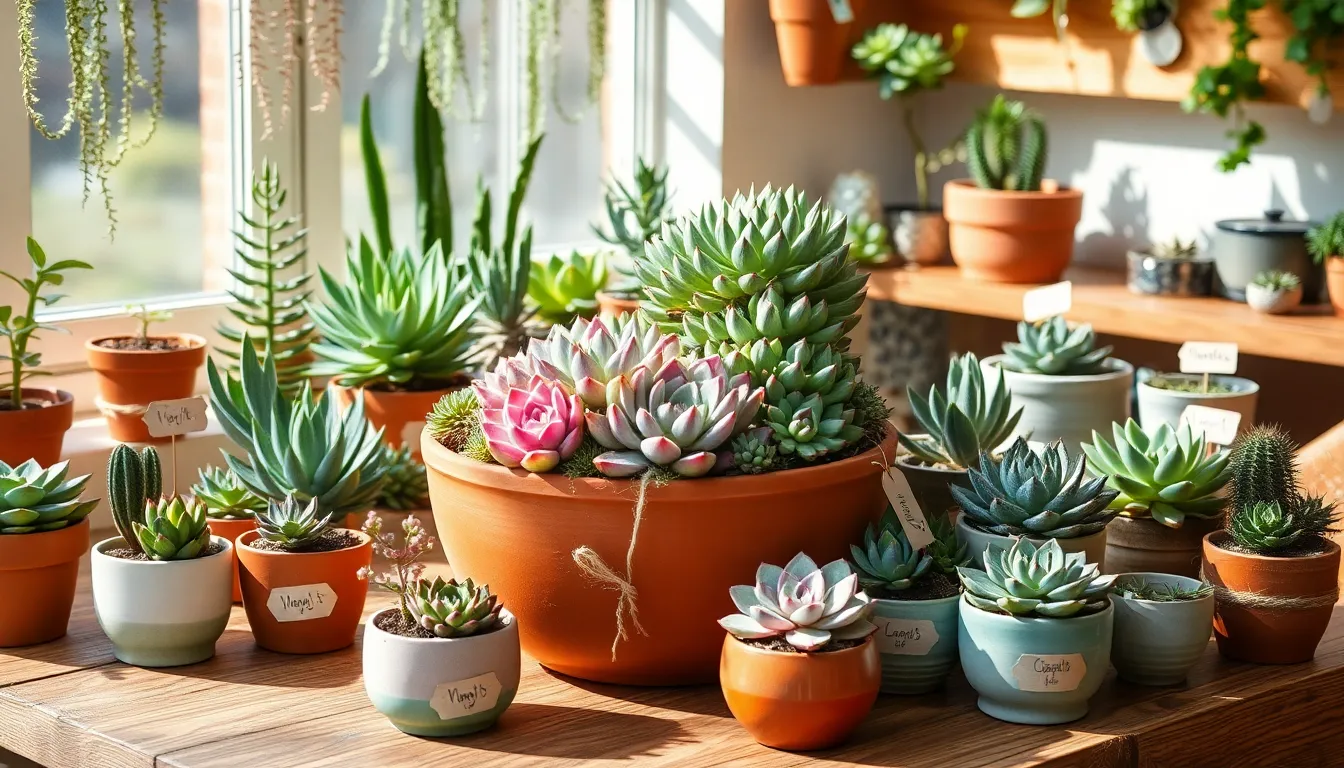In the hustle and bustle of modern life, finding a slice of tranquility within our homes can feel like a challenge. Yet, nature offers us a simple solution: succulents that not only add a touch of green but also purify the air we breathe. These remarkable plants are more than just pretty faces; they work quietly to improve indoor air quality, making our living spaces healthier. Whether you’re a seasoned gardener with a greenhouse full of leafy companions or a beginner eager to dip your toes into the world of indoor gardening, succulents are a wonderful, low-maintenance choice.
Many of us are aware that plants can enhance our home environments, but did you know that some succulents are particularly adept at filtering out toxins? In this article, we’ll explore 14 extraordinary succulents that both beautify your home and act as natural air purifiers. You’ll discover how each plant contributes to a healthier indoor climate and learn tips on how to care for these verdant allies. By the end of your reading journey, you’ll be equipped with the knowledge to transform your living space into a lush, breathable oasis.
Embarking on this green adventure might seem daunting if you’re new to gardening, but fear not—succulents are famously forgiving. Their resilience makes them the perfect starting point for those who might lack a “green thumb.” Experienced gardeners will appreciate the diversity and unique characteristics of these plants, adding another layer of interest to their collections. Join us as we delve into the world of succulents, where beauty meets practicality in the most delightful way.
Introduction to Air-Purifying Succulents
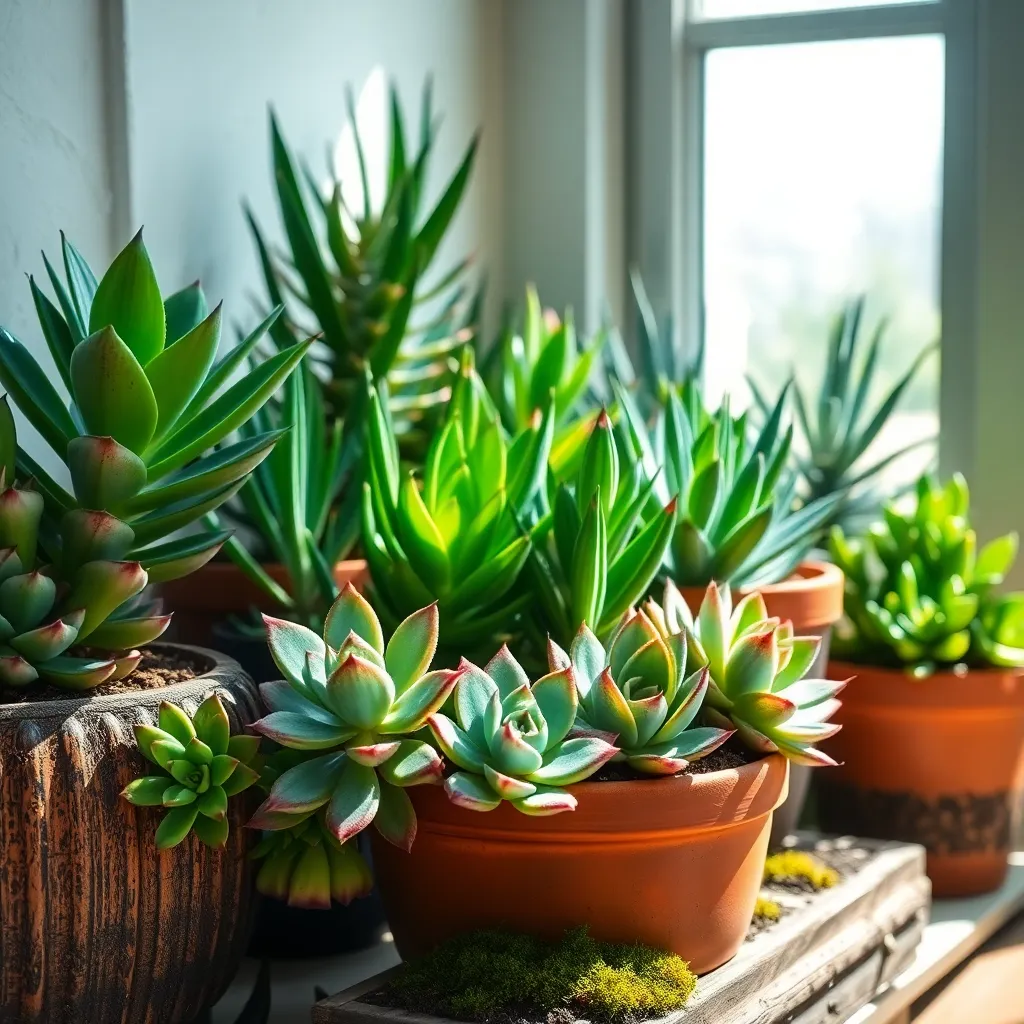
Many people might not realize that succulents are not only visually appealing but also excellent air purifiers. These resilient plants can improve indoor air quality by absorbing toxins and releasing oxygen, making them a valuable addition to any home.
For beginners, choosing the right succulent is crucial to ensure successful growth and air purification benefits. Opt for succulents like Aloe Vera or Snake Plant, as they are known for their ability to purify air while being relatively low-maintenance.
When it comes to growing conditions, succulents thrive in bright, indirect sunlight and require well-draining soil. Consider using a cactus mix or a blend of potting soil and perlite to provide the necessary drainage and aeration.
Watering is a key factor in succulent care, and it’s important to adopt the “soak and dry” method to prevent overwatering. Allow the soil to dry out completely between waterings, and reduce watering frequency during the cooler months.
Benefits of Indoor Succulents
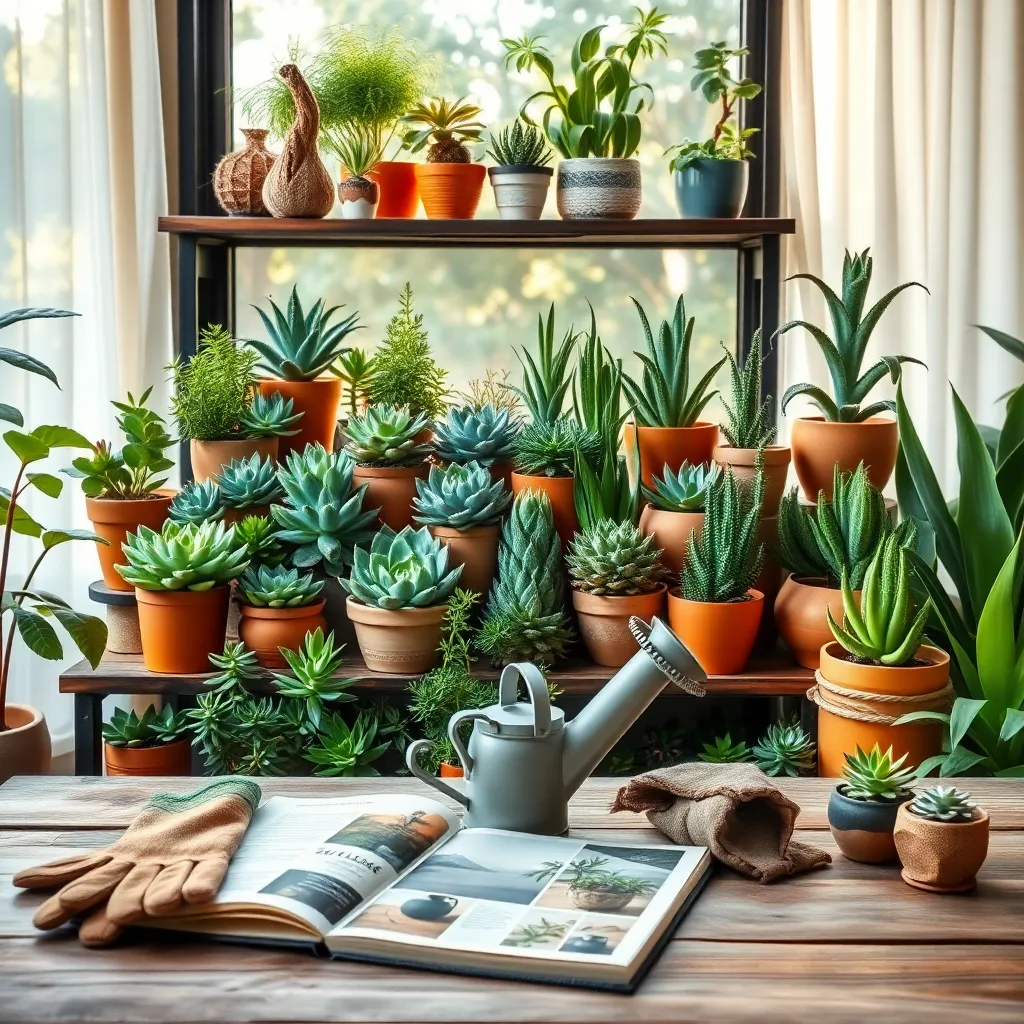
Succulents are not only visually appealing but also offer several benefits when grown indoors. They are known for their ability to purify the air by removing toxins such as benzene and formaldehyde, making them a healthy addition to any home.
For beginners, succulents are an excellent choice due to their low-maintenance nature. They require minimal watering—typically once a week or even less, depending on the humidity level of your home—which suits busy lifestyles.
Advanced gardeners can experiment with creating succulent arrangements to maximize their air-purifying benefits. Combining different species in one pot can enhance the aesthetic appeal while also diversifying the range of toxins removed from the air.
Ensuring the right conditions is crucial for the success of indoor succulents. Choose a well-draining soil mix like a cactus or succulent blend, and ensure pots have drainage holes to prevent root rot.
Place succulents in a location with plenty of indirect sunlight to mimic their natural environment. If natural light is limited, consider using a grow light to provide the necessary illumination for healthy growth.
- Monitor the plant’s leaves for signs of overwatering, such as wilting or translucent foliage.
- Rotate pots periodically to ensure all sides of the plant receive adequate light.
- During winter, reduce watering frequency, allowing the soil to dry out completely between waterings.
Aloe Vera: Nature’s Air Filter
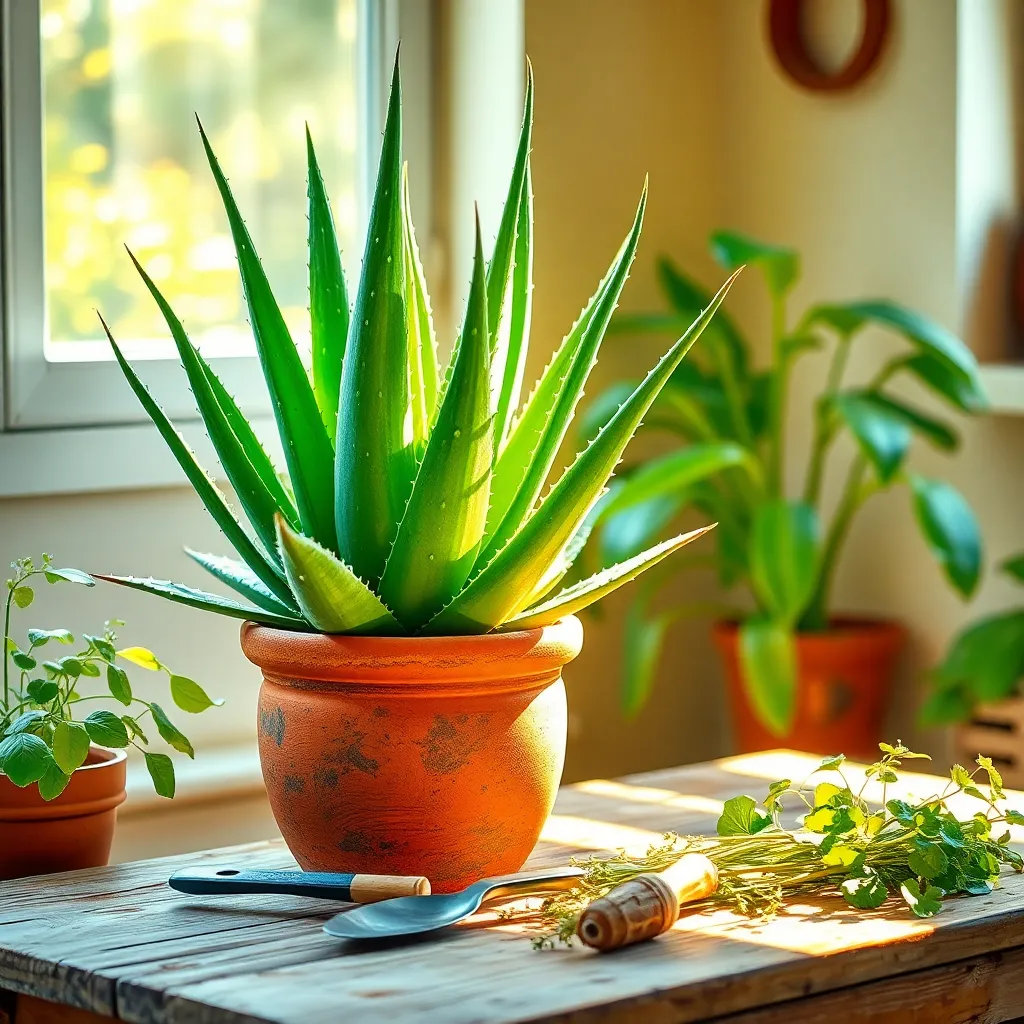
Aloe Vera is not only revered for its medicinal properties but also for its ability to purify indoor air. This succulent is highly effective at filtering out common indoor pollutants like formaldehyde and benzene, making it a valuable addition to any home.
To thrive, Aloe Vera requires a sunny location, ideally near a south or west-facing window. Ensure it receives at least six hours of bright, indirect sunlight daily to maintain its vibrant green color and healthy growth.
When it comes to watering, Aloe Vera prefers a “soak and dry” method. Allow the soil to dry out completely between waterings, which typically means watering every 2-3 weeks depending on your home’s humidity levels.
For optimal growth, plant Aloe Vera in a well-draining cactus or succulent soil mix. This type of soil prevents root rot, a common issue for Aloe Vera when the roots sit in waterlogged conditions.
Advanced gardeners can propagate Aloe Vera easily by removing offsets, also known as “pups,” that grow at the base of mature plants. Simply separate these pups from the parent plant and replant them in their own pots with fresh soil to encourage new growth.
Snake Plant: Low-Maintenance Cleanser
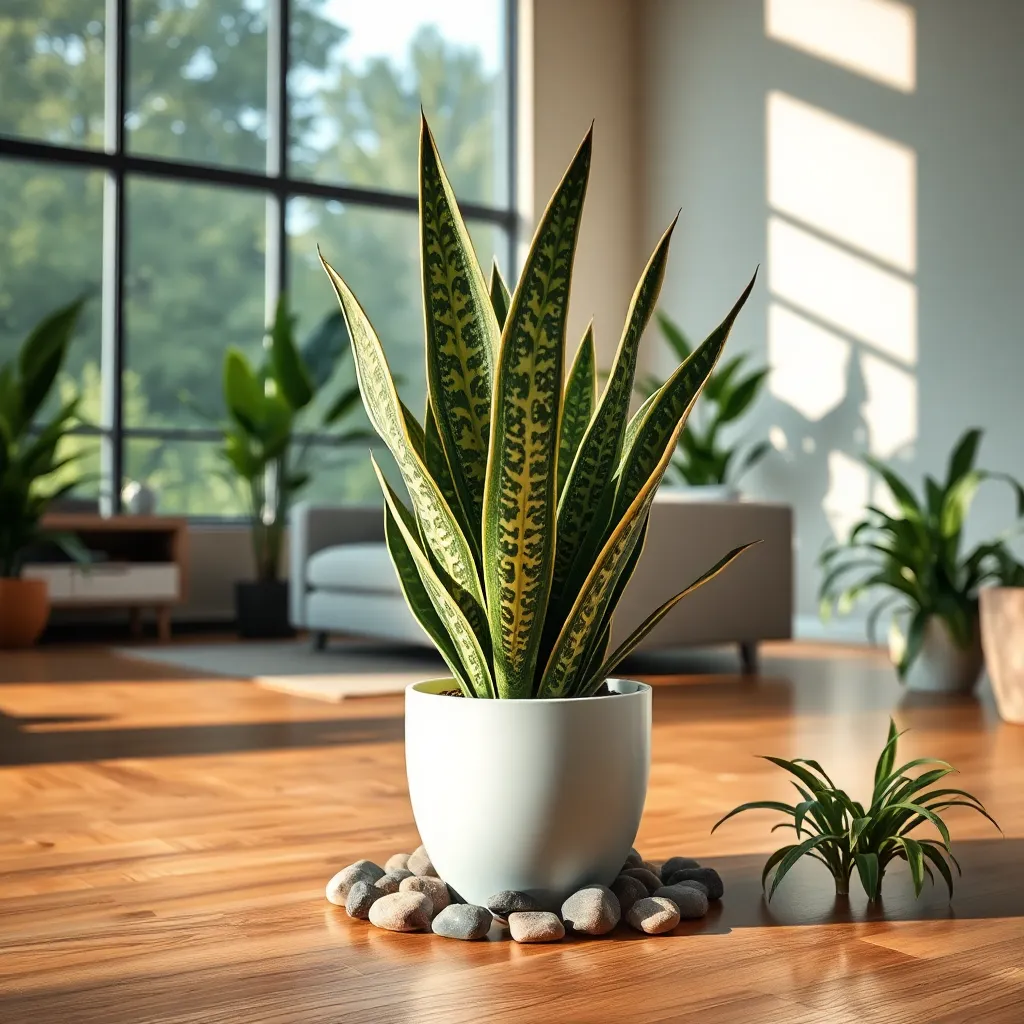
Known for its resilience, the Snake Plant (Sansevieria) is a top choice for beginners seeking a low-maintenance indoor plant. Its air-purifying properties make it an excellent addition to your home, filtering out toxins like formaldehyde and benzene.
To thrive, place your Snake Plant in indirect sunlight, although it can tolerate low-light conditions remarkably well. Use a well-draining potting mix designed for cacti and succulents, which helps prevent root rot.
Watering is straightforward: allow the soil to dry completely between waterings to avoid overwatering. During winter, reduce watering frequency as the plant’s growth slows down, making it even easier to care for.
For those looking to propagate, Snake Plants are particularly rewarding. Simply divide the rhizomes or use leaf cuttings, and you’ll quickly expand your collection with minimal effort.
Jade Plant: Stylish and Purifying
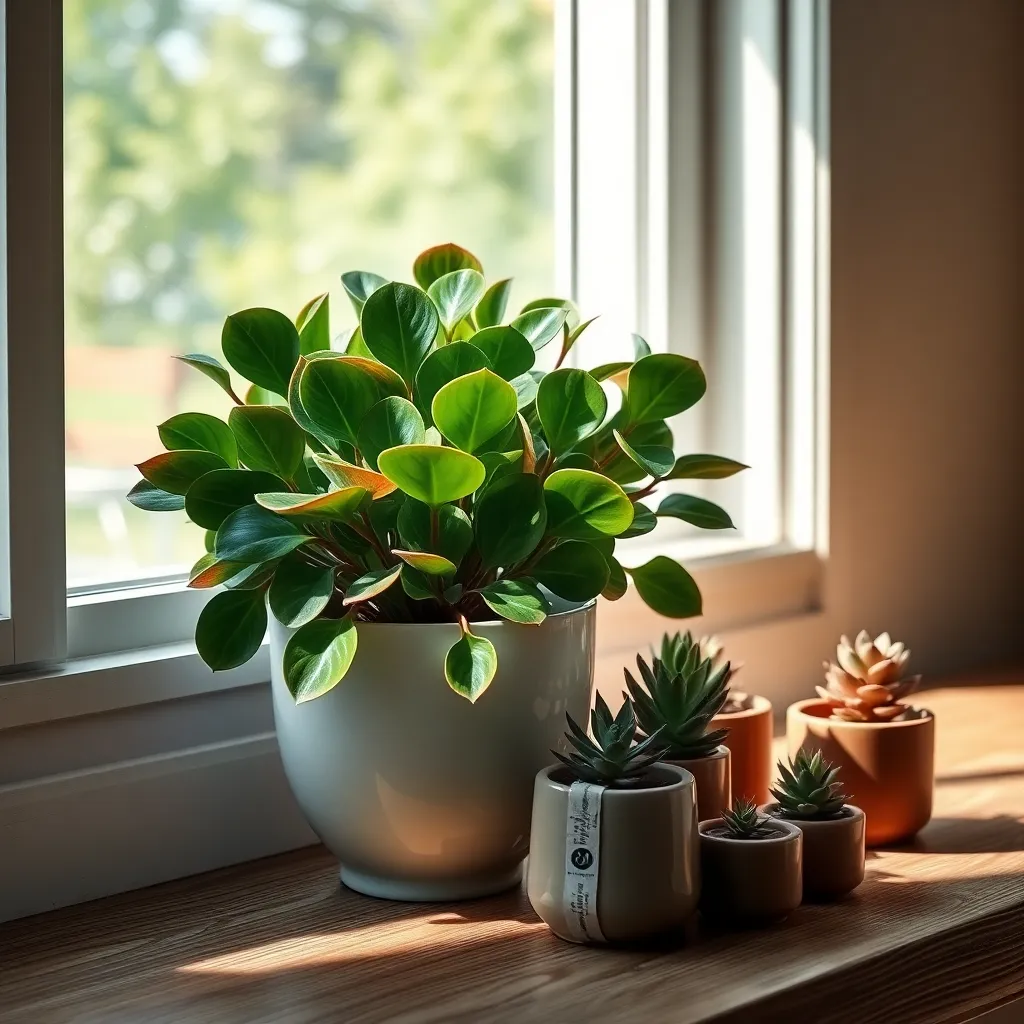
The jade plant, known for its thick, glossy leaves, is both a stylish addition to your home and an efficient air purifier. This resilient succulent prefers bright, indirect light, making it perfect for a sunny windowsill.
Water your jade plant sparingly, allowing the soil to dry completely between waterings to prevent root rot. During the growing season in spring and summer, consider feeding it with a balanced, water-soluble fertilizer every four to six weeks for optimal growth.
A key to jade plant success is using well-draining soil, such as a cactus mix or a combination of potting soil and perlite. For advanced gardeners, pruning can be done to encourage a bushier growth habit and remove any dead or damaged leaves.
To ensure your jade plant thrives, keep the temperature between 65-75°F (18-24°C) and avoid exposing it to drafts or sudden temperature changes. With proper care, this plant not only enhances your indoor space but also contributes to a cleaner, healthier environment.
Echeveria: Beauty with Benefits
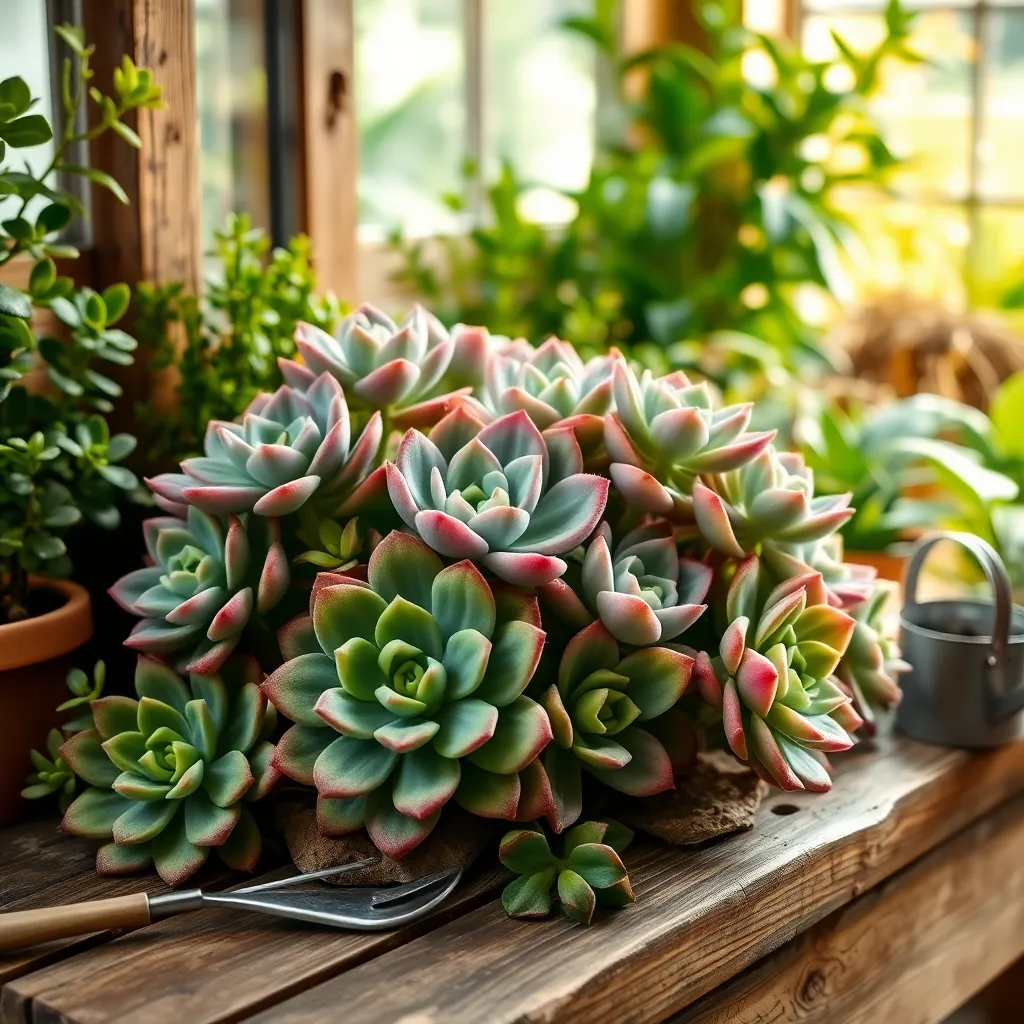
Echeveria, a stunning rosette-forming succulent, not only beautifies indoor spaces but also contributes to air purification. Known for their vibrant colors and unique shapes, these plants are a delightful addition to any room.
For beginners, Echeveria is incredibly easy to care for, requiring minimal attention. Ensure they are placed in a spot with bright, indirect sunlight to thrive and maintain their colors.
Use a well-draining cactus or succulent soil mix to prevent root rot, which is crucial for their health. Water them sparingly, allowing the soil to dry out completely between waterings to mimic their natural arid environment.
Advanced gardeners can propagate Echeveria through leaf cuttings, a rewarding technique that expands your collection. Simply remove a healthy leaf, let it callous for a day or two, and place it on moist soil until roots form.
Zebra Plant: Striped Air Freshener
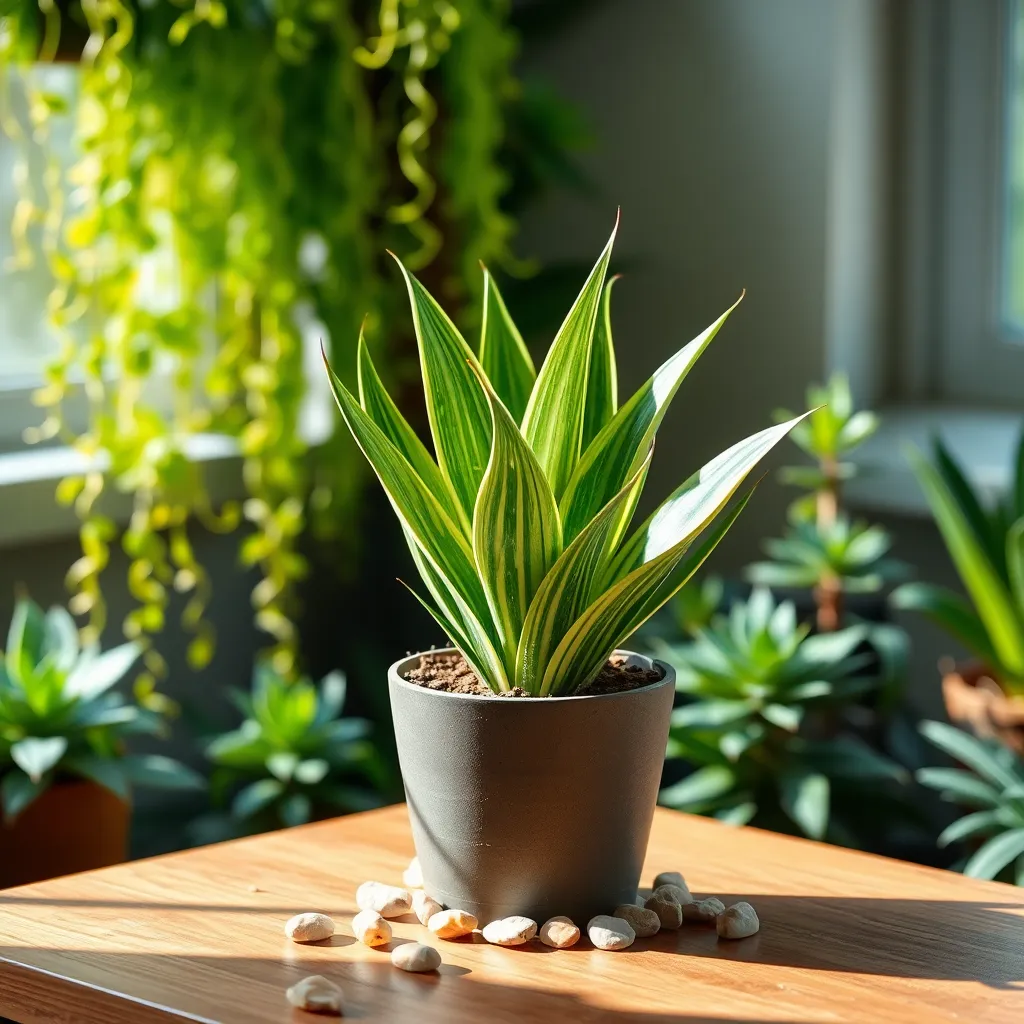
The Zebra Plant, known for its striking striped leaves, is not only a visual delight but also an effective air purifier. This succulent thrives indoors, making it an excellent choice for those looking to improve indoor air quality with minimal effort.
To keep your Zebra Plant healthy, ensure it gets bright, indirect light, as direct sunlight can scorch its leaves. A south or east-facing window is ideal, but consider using a sheer curtain to diffuse harsh rays.
When it comes to watering, the Zebra Plant prefers to dry out completely between waterings. Water deeply, but only when the soil feels dry to the touch about an inch below the surface, typically every two to three weeks.
For optimal growth, use a well-draining cactus or succulent potting mix, which prevents root rot. Adding perlite or coarse sand to regular potting soil can enhance drainage, a key requirement for this plant.
Advanced gardeners can encourage blooming by maintaining temperatures between 65°F and 75°F and providing a gentle fertilizer boost during the growing season. Using a diluted cactus fertilizer every few months can promote both leaf and flower development.
Panda Plant: Fuzzy Leaf Freshness

Another fantastic addition to your indoor garden is the Panda Plant, known for its charmingly fuzzy leaves. This succulent is not only visually appealing but also acts as a natural air purifier, making it a beneficial addition to your living space.
To ensure your Panda Plant thrives, place it in a location with bright, indirect sunlight. Direct sunlight can scorch its leaves, so a spot near a window with filtered light is ideal for maintaining its health and vibrancy.
When it comes to watering, the Panda Plant prefers to dry out between waterings. Ensure the soil is completely dry before watering again, roughly every two to three weeks, to prevent root rot.
For optimal growth, use a well-draining cactus or succulent potting mix. You can enhance drainage by adding perlite or coarse sand to the soil mix, ensuring your Panda Plant stays healthy and vibrant.
Spider Plant: Versatile Air Cleaner
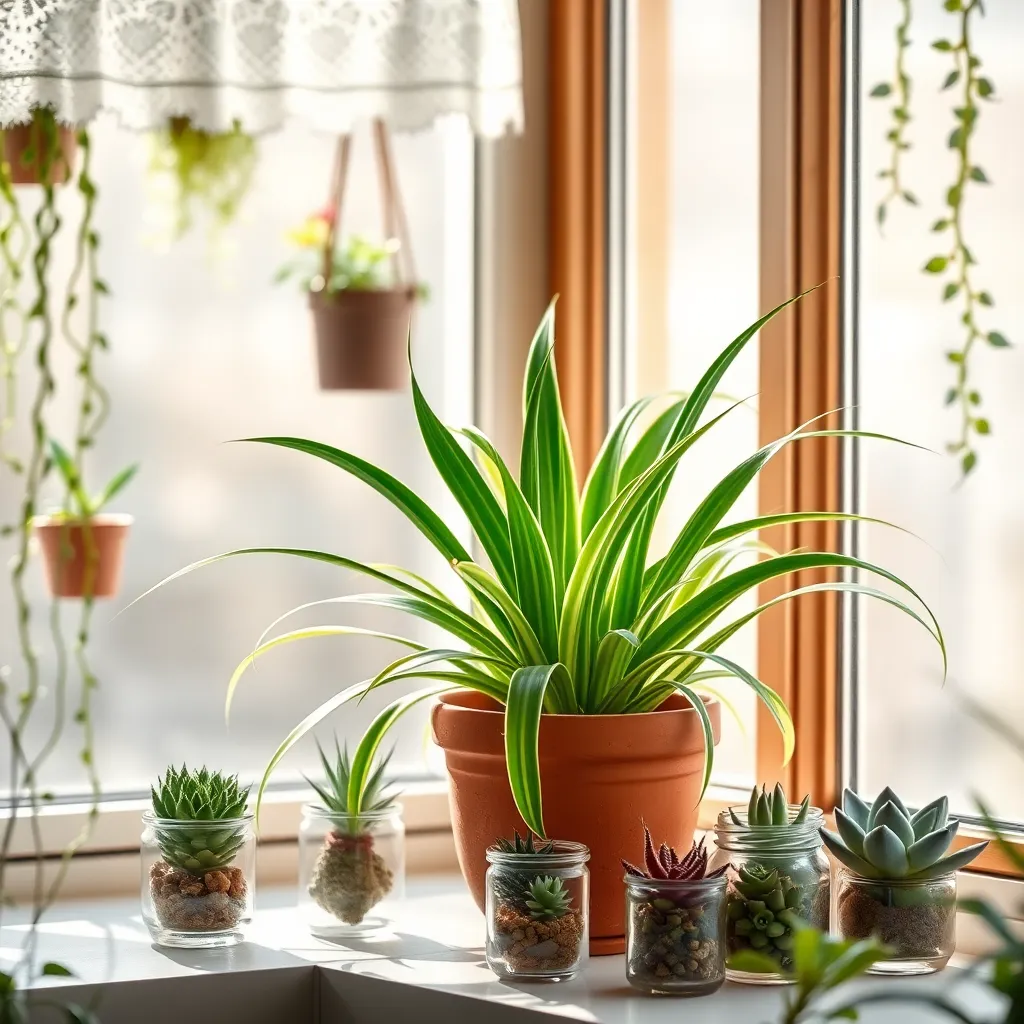
Known for their lush, arching leaves, spider plants are a beloved choice for indoor gardeners seeking both beauty and function. These hardy plants are not just visually appealing; they are also effective at purifying indoor air by removing common pollutants like formaldehyde and xylene.
Spider plants thrive in bright, indirect light but can also tolerate low-light conditions, making them adaptable to various home environments. To maintain their health, water them moderately, allowing the soil to dry out slightly between waterings to prevent root rot.
Use a well-draining potting mix, such as a combination of peat and perlite, to ensure optimal growth. Spider plants also appreciate occasional feeding during the growing season; a balanced liquid fertilizer applied every month will support their vigorous growth.
For gardeners looking to expand their collection, spider plants offer an easy propagation method through their “spiderettes” or baby plants. Simply place these young offshoots in water until roots develop, then transfer them to soil for a new generation of air-cleaning plants.
Burro’s Tail: Trailing Air Enhancer
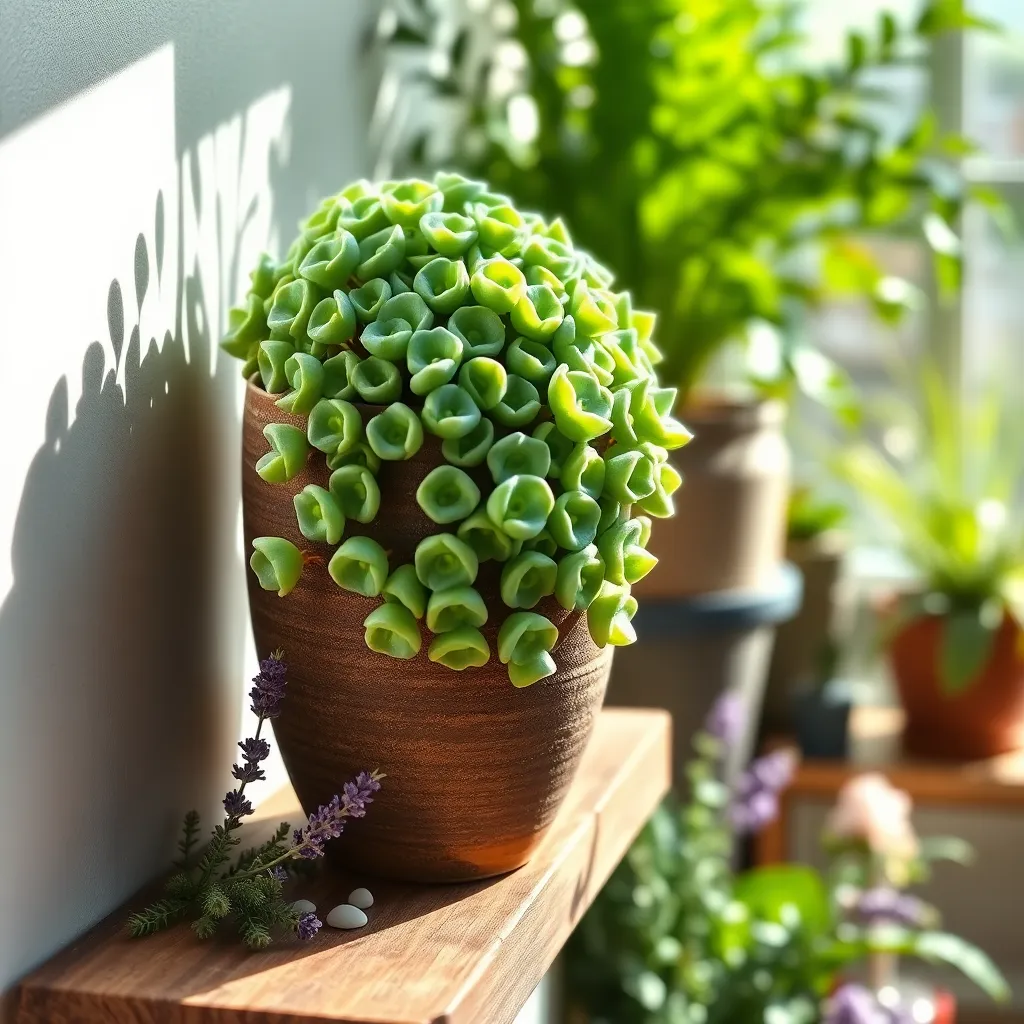
Burro’s Tail, also known as Sedum morganianum, is a charming succulent that trails elegantly, making it a perfect addition to any indoor space. Its cascading blue-green leaves not only enhance the air quality but also add a soothing visual appeal to your home.
To successfully grow Burro’s Tail, it’s essential to provide it with bright, indirect light. Direct sunlight can scorch its leaves, so placing it near a window with filtered light or in a well-lit room is ideal.
When it comes to watering, this succulent prefers a “soak and dry” approach, which means allowing the soil to dry out completely between waterings. Use a well-draining potting mix, ideally a cactus or succulent blend, to prevent root rot.
Advanced gardeners may want to propagate Burro’s Tail by gently removing a few leaves and allowing them to callus over before placing them on top of moist soil. With patience, these leaves will sprout roots, eventually growing into new plants.
Agave: Desert Plant, Indoor Freshness
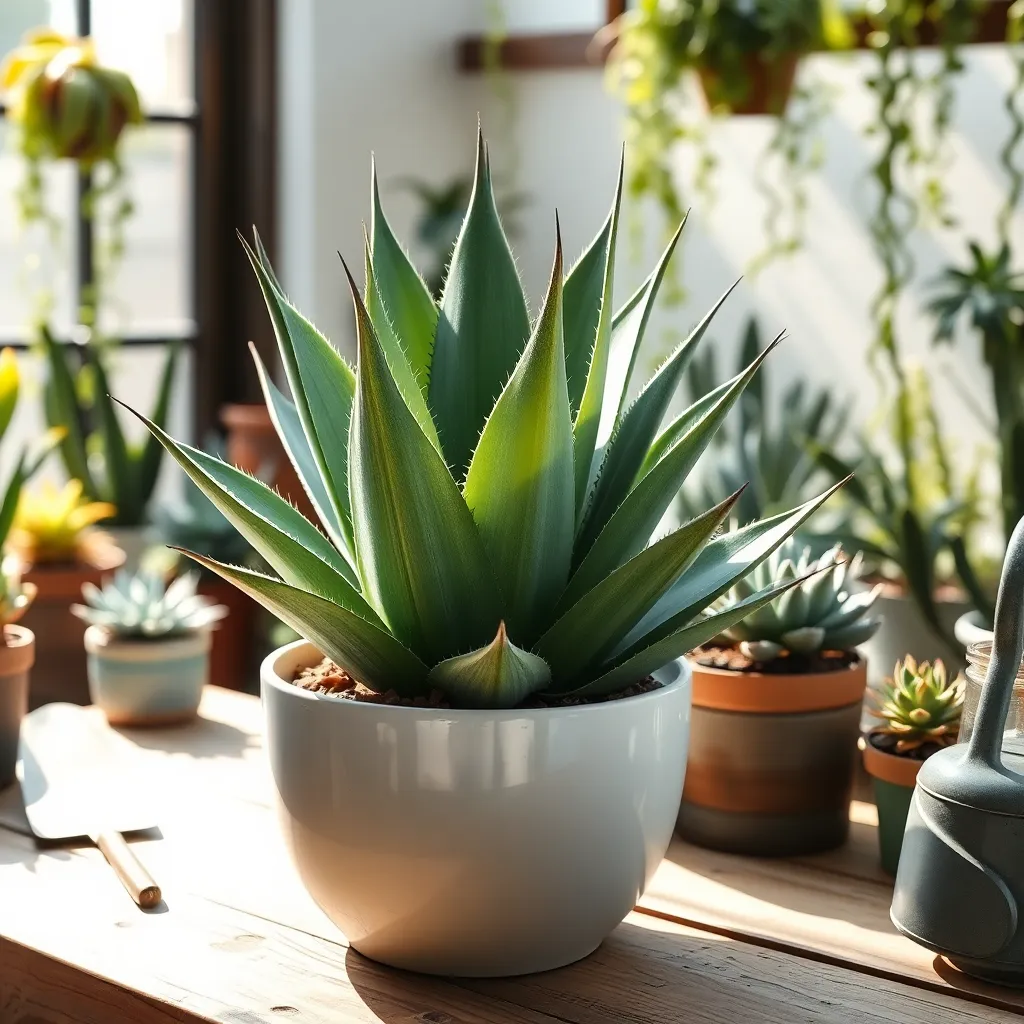
Agave, a resilient desert plant, brings a touch of the arid outdoors into your home while improving air quality. This succulent thrives under bright light, so place it near a south or west-facing window for optimal growth.
To ensure your agave’s health, use a potting mix specifically formulated for succulents or cacti, which offers excellent drainage. Water your agave sparingly, allowing the soil to dry completely between waterings; overwatering is the most common mistake with this plant.
Beginners will appreciate how low-maintenance agave is, needing minimal attention once established. For experienced gardeners, try propagating agave through offsets, or “pups,” which can be gently removed and potted separately to create new plants.
Agave plants can also benefit from a light application of a balanced, water-soluble fertilizer during the growing season. Remember to reduce watering and skip fertilization in the winter months, as the plant naturally enters a dormant phase. By following these practical tips, you can enjoy the beauty and air-purifying benefits of agave indoors year-round.
Christmas Cactus: Festive Air Purifier
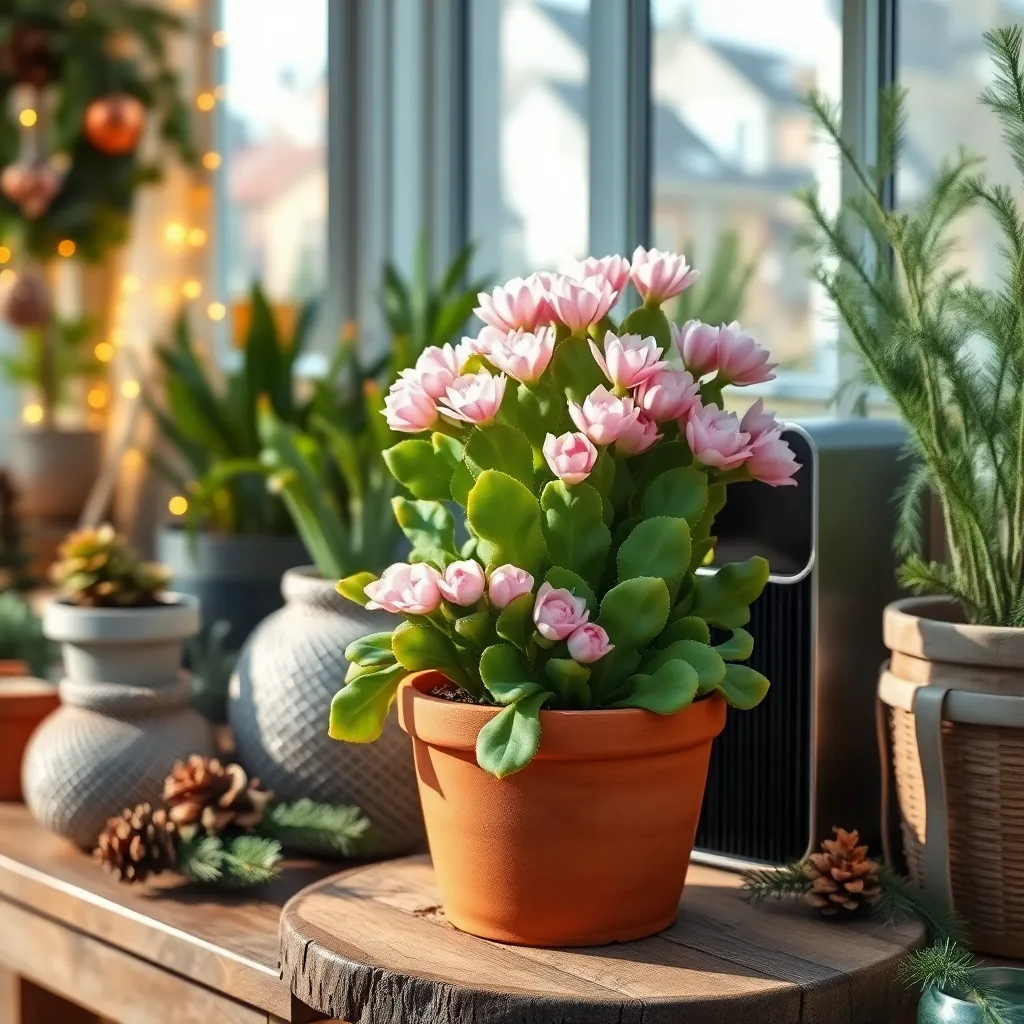
Not just a festive delight, the Christmas Cactus is also an effective air purifier, making it a great addition to your indoor plant collection. This succulent thrives in bright, indirect light, so placing it near a north or east-facing window is ideal.
Water the Christmas Cactus thoroughly, allowing the soil to dry out slightly between waterings. It’s crucial to use a well-draining potting mix, such as a blend of potting soil and sand, to prevent root rot.
For beginners, the Christmas Cactus is forgiving and adaptable, making it a perfect starter plant. Advanced gardeners can encourage blooming by reducing watering and keeping the plant cool for six weeks prior to the holiday season.
Fertilize your Christmas Cactus monthly with a balanced liquid fertilizer from spring through summer to promote healthy growth. To propagate, simply take a cutting of a few segments, let it callous over for a day, and plant it in a fresh succulent mix.
Caring for Indoor Succulents

Indoor succulents are a great choice for those looking to purify air while adding a touch of greenery to their homes. They require minimal care, making them perfect for beginners and busy individuals alike.
To thrive, succulents need a bright spot in your home, such as a windowsill that receives indirect sunlight. If natural light is limited, consider using a grow light to supplement their light requirements, ensuring they get at least six hours of light each day.
Watering is a critical aspect of succulent care, and overwatering is a common mistake. Allow the soil to dry out completely between waterings, and then water thoroughly, ensuring excess water drains away.
Using the right soil mix is essential for healthy succulents. Opt for a well-draining cactus or succulent soil mix, or make your own by combining potting soil with sand and perlite for improved drainage.
Advanced gardeners might consider fertilizing their succulents during the growing season. Use a diluted, balanced fertilizer once a month in spring and summer to promote growth, but avoid fertilizing in winter when the plants are dormant.
Repotting is occasionally necessary as succulents outgrow their containers. Choose a pot that is slightly larger than the current one and ensure it has drainage holes to prevent root rot.
Conclusion: Choosing Your Succulent
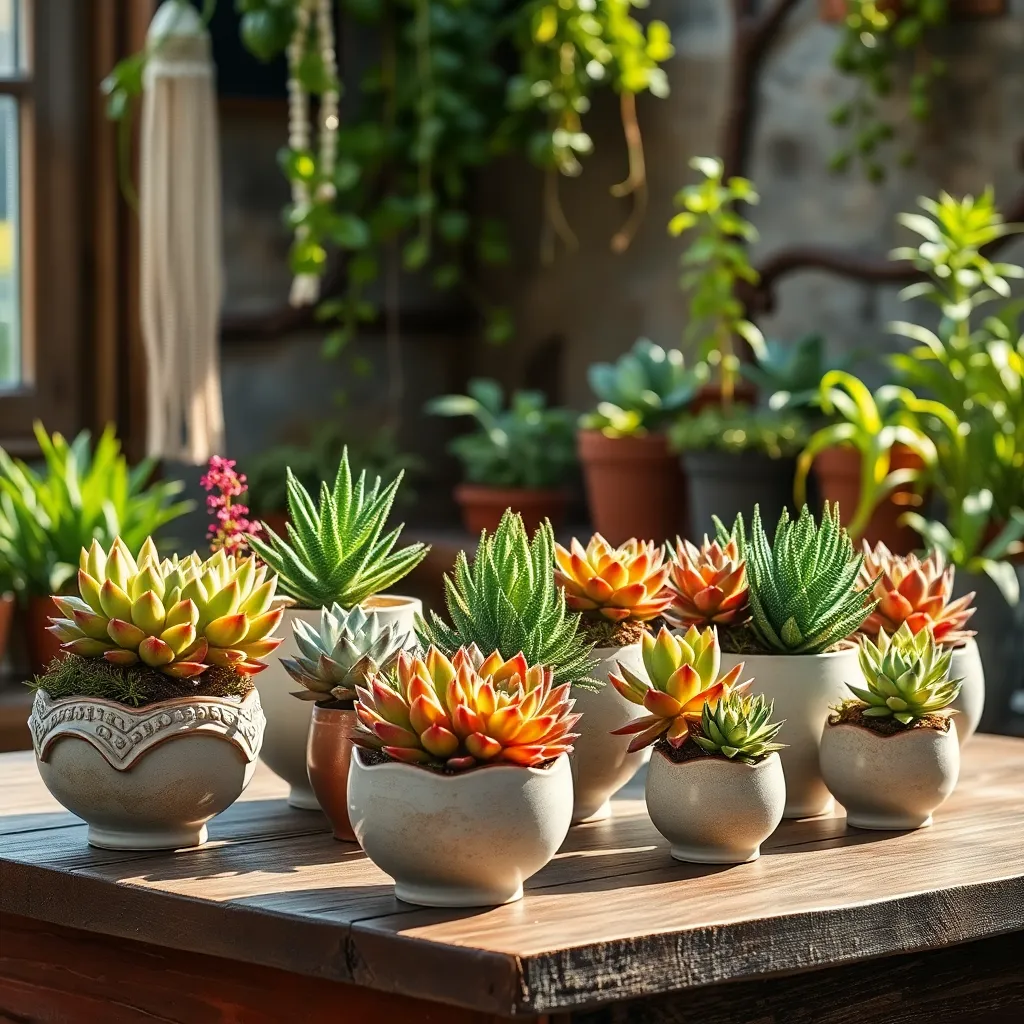
Choosing the right succulent for your indoor space requires consideration of several factors. Start by assessing the light conditions in your home; succulents thrive in bright, indirect sunlight, so placing them near a south or east-facing window is ideal.
Different succulents have unique care needs, so it’s crucial to understand the specific requirements of each plant. For beginners, try starting with easy-to-care-for varieties like the jade plant or aloe vera, which are both forgiving and resilient.
Soil choice is another critical factor in succulent success. Use a well-draining soil mix, ideally one specifically designed for cacti and succulents, to prevent root rot and promote healthy growth.
Watering your succulents properly is essential to their health. Most succulents need watering only when the soil is completely dry, typically every two to three weeks, but always adjust based on humidity and temperature conditions in your home.
Advanced gardeners might consider experimenting with propagation techniques. Many succulents, such as echeveria and sedum, can be easily propagated from leaf cuttings, allowing you to expand your collection without additional cost.
Humidity can be a concern with indoor succulents, as they prefer dry air. Ensure good air circulation around your plants and avoid placing them in overly humid areas like bathrooms or kitchens to maintain their optimal environment.
Conclusion: Growing Success with These Plants
In exploring the fascinating world of succulents that purify indoor air, we’ve uncovered 14 key relationship concepts that these resilient plants metaphorically embody. From the enduring strength of the Aloe Vera to the adaptable nature of the Jade Plant, each succulent symbolizes essential elements of a thriving partnership, such as trust, patience, growth, and resilience. These insights remind us that relationships, much like plants, require nurturing, understanding, and the right environment to flourish.
As a first step towards cultivating healthier relationships, consider introducing a succulent into your home as a daily reminder of these principles. Let its presence inspire you to nurture the bonds that matter most.
We encourage you to bookmark this article as a go-to resource, ensuring these valuable insights are at your fingertips whenever you need a gentle reminder of the power of nature in guiding relationship growth.
Looking ahead, imagine the success that awaits as you apply these lessons, watching your relationships blossom with the same vibrancy and vitality as the succulents you cherish. Remember, every small action contributes to a stronger, more fulfilling connection. Save this guide as your companion on the journey to relationship success, and take that first step today.

